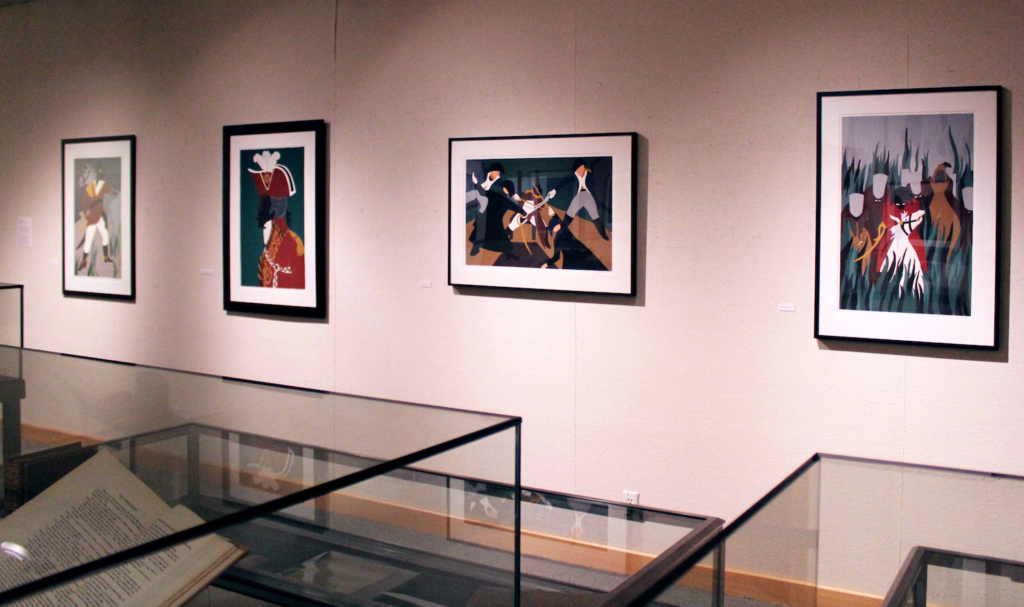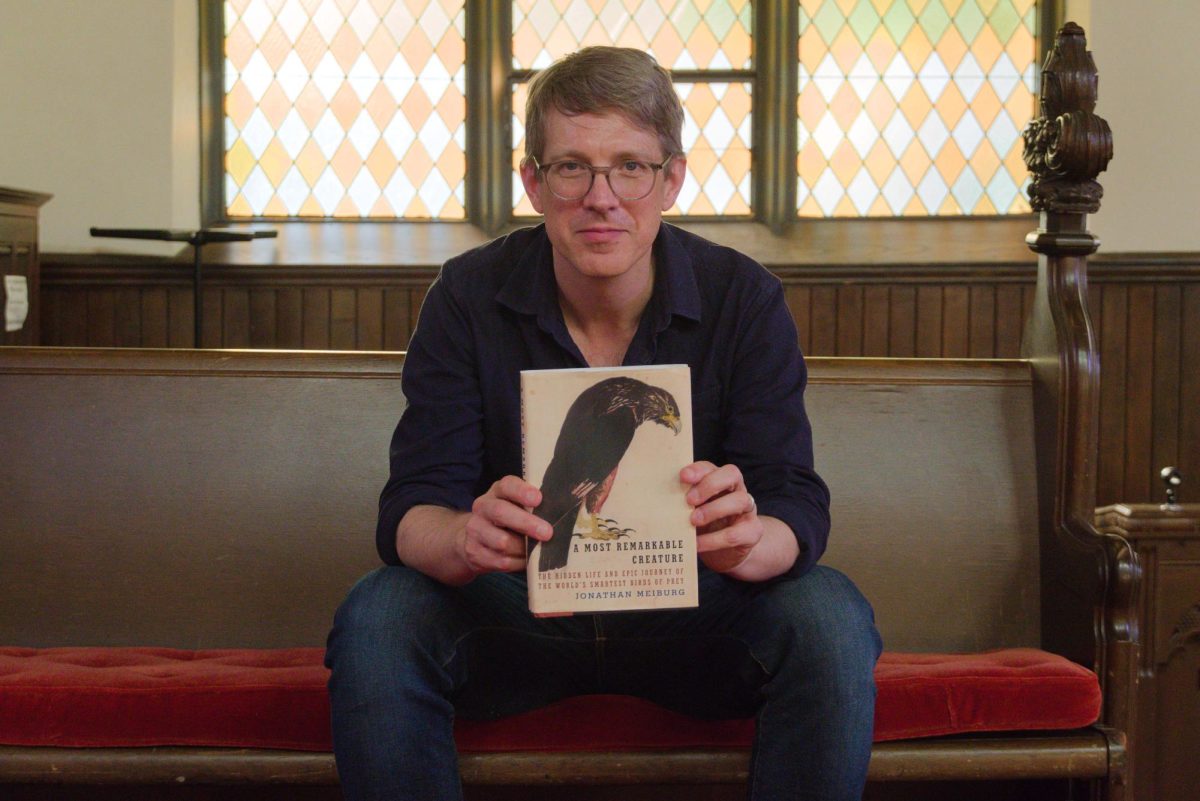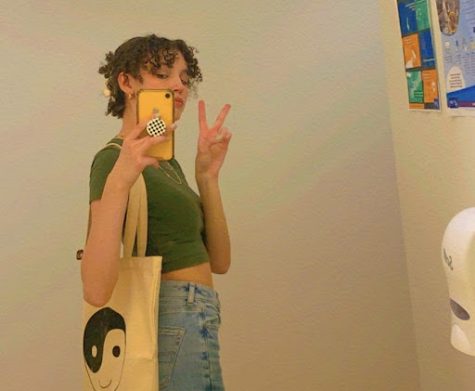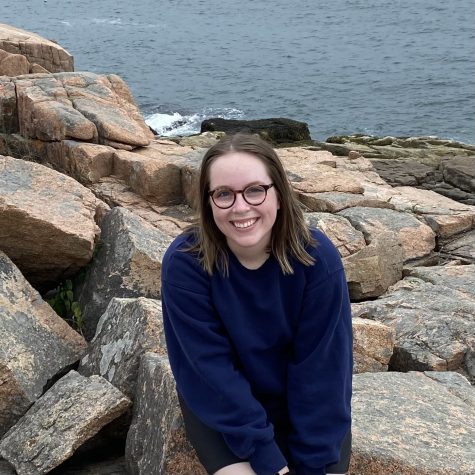The intense color and blocked shapes characteristic to American painter Jacob Lawrence’s style are visible in a series of serigraphs based on his original 41-painting series cataloging the life of Haitian general and revolutionary leader Toussaint L’Ouverture. The Grinnell College Museum of Art (GCMOA) has purchased 14 of the 15 screen-prints in the series, 11 of which are currently on display in the basement of Burling Library.
The first 12 prints that the GCMOA acquired were purchased in 2020, according to GCMOA Associate Director and Curator Daniel Strong.
“Kay Wilson, who was the curator of our collection up until her retirement … she actually began the process of acquiring 12 of these prints,” Strong said.
Williams worked with Professor Fredo Rivera, art history, who specializes in Caribbean art, to find and acquire the prints.
“This made perfect sense, for us to try and acquire these,” said Strong. “We were able to acquire 12 of them all at once, just as the pandemic began, from a gallery in Seattle which represents his [Lawrence’s] estate.”
Of these 12 prints, only 10 were able to be displayed, because two of them were not framed. After the initial purchase, a 13th print became available in an auction in Texas, “General Toussaint L’Ouverture,” designed from Lawrence’s portrait of L’Ouverture.
“It’s kind of the prize of the whole series, because it’s his portrait as Jacob Lawrence envisioned it,” Strong said. “There don’t seem to be any actual portraits from the life of Toussaint L’Ouverture … but there were images at the time in biographies of him that Jacob Lawrence used as a kind of inspiration.”
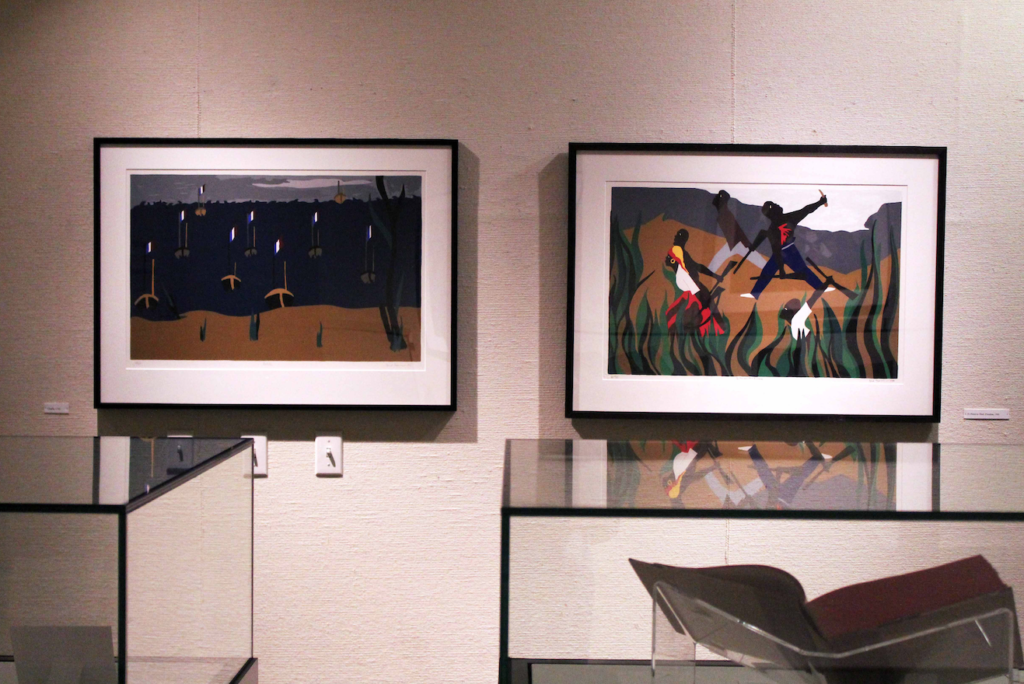
Another print, titled “Contemplation,” was acquired by the GCMOA this year. When it arrives, it will be the 14th of 15 total in the collection.
“It [‘Contemplation’] shows the literary side of Toussaint L’Ouverture,” Strong said. “I mean, when you hear that he was a Haitian general, all you think of is the military side. … He was in fact a scholar general, essentially. And I think this piece shows … the artistic innovation of Jacob Lawrence himself.”
Collections Manager Jocelyn Krueger wrote in an email to the S&B that “Contemplation” also reflects on Lawrence’s own process connecting to Black history through art.
“’Contemplation’ … depicts Toussaint L’Ouverture in study, showing that the struggle for freedom was not just a physical battle, but a struggle of ideas and of the mind,” Krueger wrote. “This brings to mind Jacob Lawrence’s own study on the subject, for which he couldn’t rely on the traditional or dominant locations of history access, like public libraries or school classrooms, as these places excluded Toussaint L’Ouverture from the narratives of history. Instead, the history of this important event and person were available to Lawrence through more informal or community-run libraries and books created by and for the Black communities in which Lawrence worked.”
These prints, according to a video made by Rivera for the GCMoA, are “explicit in narrating Black modernity,” and tell a rich history with the intent of educating the viewer, while telling the struggle for Black liberation with “emotional and visual fervor.”
The series, much like the rest of Lawrence’s work, uses strong color and shapes to depict these narratives. The style, which Lawrence called dynamic cubism, translates well to serigraphy, according to Strong.
They [serigraphs] are not hard to find but they’re hard to find in good condition … any light, they’ll fade. What we want, obviously, is the rich color that is original to them. – Dan Strong, GCMOA Associate Director and Curator
Serigraphs are made using a process called screen-printing, which uses a mesh or silkscreen to transfer ink onto the paper. This technique also uses stencils to create blocks of color, a process strongly reminiscent of Lawrence’s painting style. Since each print is created with this stenciling technique, no two are perfectly alike.
Although there are 15 paintings represented in the print collection, each print was copied and produced in multiple editions. For some of the paintings, only around 15 prints were made, while for others, the artist serigraphed over 100.
Even though multiple editions were created of each print, it was still difficult to find the prints to display because the nature of serigraphy leads to art pieces that fade and can be damaged easily.
“They [serigraphs] are not hard to find but they’re hard to find in good condition … any light, they’ll fade,” Strong said. “What we want, obviously, is the rich color that is original to them.”
Due to this, the prints will soon go back into the GCMOA’s storage, once they are no longer needed for class use this semester, in order to preserve the collection.
While the prints are currently on display in Burling because they are being used for a French class taught by Professor David Harrison, any student can come view them, and, according to Krueger, they should.
“This is a dynamic and colorful print series that depicts an important person, Toussaint L’Ouverture,” wrote Krueger. “And … the largest successful slave revolt ending in the creation of the independent modern state of Haiti, an important event that is generally left out of the teaching of history, made all the more broadly important through the artistic language of the Black American artist, Jacob Lawrence.”


















































